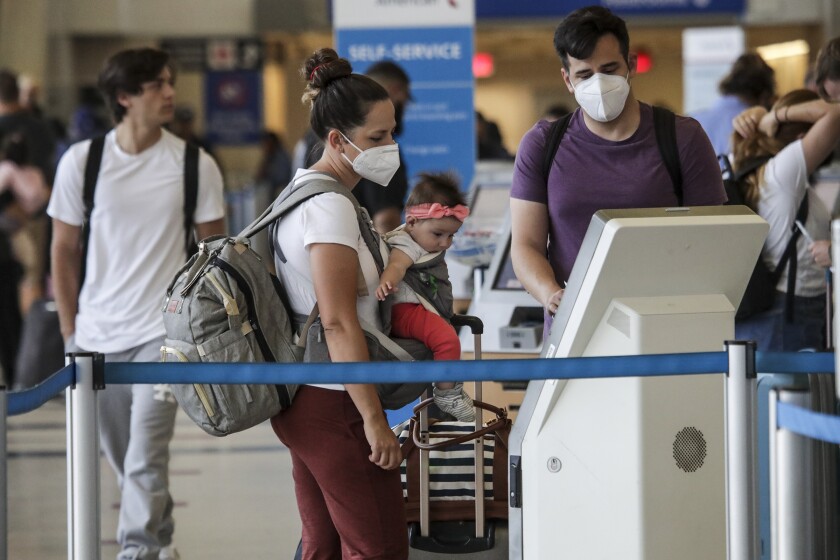CALIFORNIA
Super-infectious BA.4, BA.5 push L.A. coronavirus cases to highest levels in 5 months

A rush of passengers at LAX on July 1 for the holiday weekend.
(Irfan Khan / Los Angeles Times)
BY RONG-GONG LIN II,
LUKE MONEY
JULY 6, 2022 UPDATED 9:11 AM PT
Los Angeles County’s coronavirus case rate hit its highest point in nearly five months over the Fourth of July holiday weekend, a troubling sign of how two new super-infectious Omicron strains are creating conditions for a fraught summer.
Two Omicron subvariants, BA.4 and BA.5, have become dominant nationwide, and they appear to be among the most contagious yet of this pandemic.
Coronavirus case rates have also been increasing statewide, with the San Francisco Bay Area reporting California’s highest rate. Hospitalizations have also been creeping up, but hospitals haven’t reported being overwhelmed. Still, experts are concerned the next weeks could see more rapid spread that would put new pressures on the healthcare system.
“Right now, if we go up more, it is going to get into a little bit more of a danger zone with hospitalizations,” with a potential to strain the healthcare system, said Dr. Peter Chin-Hong, a UC San Francisco infectious-disease expert.
Too many coronavirus-positive patients can impact hospital operations, even if they’re being treated for non-COVID-19 reasons, because of the resources needed to isolate them, Chin-Hong said.
One of the biggest concerns about BA.4 and BA.5 is that people can get reinfected even after suffering from an earlier Omicron subvariant. Dr. Robert Wachter, chair of UC San Francisco’s Department of Medicine, wrote that this could mean elevated infection levels through the summer and into the fall.
“Beyond that, much depends on whether a new variant emerges to supplant it. Given the pattern of the past year, it would be foolish to bet against that,” he wrote over the weekend.
The rise of the latest subvariant, BA.5, he added, is particularly notable because “prior infection — including an Omicron infection as recent as last month — no longer provides robust protection from reinfection.”
“We’re seeing such folks get reinfected within one to two months,” he added.
Vaccinations and boosters remain “hugely valuable in preventing a severe case that might lead to hospital/death,” Wachter wrote. “But its value in preventing a case of COVID, or preventing transmission, is now far less than it once was.” |





